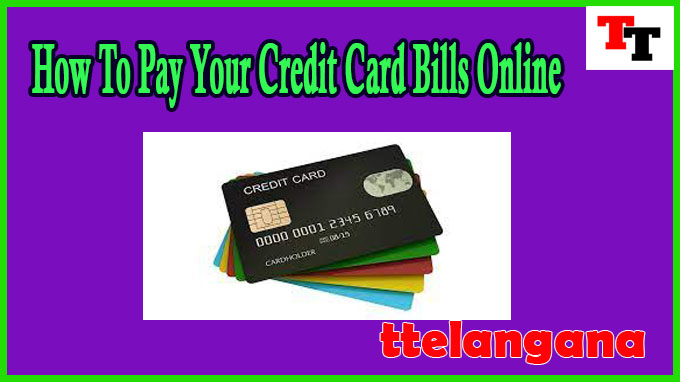How To Pay Your Credit Card Bills Online
Paying your credit score card payments on line is a convenient and steady way to manipulate your price range. It lets in you to make timely bills from the consolation of your home or while on the go, averting the trouble of writing checks or touring a physical financial institution branch. In this guide, we’ll stroll you via the steps to pay your credit card payments on-line, masking standard commands relevant to maximum banks and financial establishments.
Set Up Online Banking: Before you may pay your credit score card payments on line, you want to have on-line banking access. If you have not already set it up, go to your bank’s internet site and look for the “Online Banking” or “Sign Up” alternative. Follow the commands to sign up your account, imparting the specified facts including your account range, non-public details, and verification code.
Log In to Your Account: Once your on-line banking account is installation, log in using your username and password. Some banks can also provide multi-component authentication for introduced security, which may additionally contain sending a verification code to your registered mobile number or e mail address.
Add Your Credit Card: If you have not added your credit card in your on-line banking profile, locate the option to “Add Account” or “Link Account.” You will need to provide your credit score card info, which includes the card range, expiration date, and the name on the cardboard. Follow the activates to verify your possession of the credit card.
Locate Bill Payment Section: After including your credit score card, navigate to the “Bill Payment” or “Payments” segment within your on line banking account. The vicinity of this selection would possibly range from bank to bank, however it’s miles generally prominently displayed at the dashboard or primary menu.
Choose Your Payment Method: Once you are in the bill fee phase, pick out “Credit Card” because the price type and select the credit score card account you wish to pay. If you have multiple credit cards with the equal bank, ensure you choose the right one.
Enter Payment Details: Provide the important payment information, including the quantity you need to pay and the date you want the payment to be processed. You may additionally have the choice to make a minimum fee, pay the full exceptional stability, or input a custom amount.
How To Pay Your Credit Card Bills Online
Select Payment Source: Next, choose the funding supply on your credit card fee. Typically, you may use your checking account or savings account linked to your on line banking profile. Some banks additionally let you use a debit card for the charge.
Review and Confirm: Before submitting the fee, evaluate all of the information to make sure accuracy. Check the price amount, the credit score card account you’re paying, and the supply of finances. Once you’re happy, click on the “Confirm” or “Submit” button to provoke the charge.
Payment Confirmation: After making the charge, you may receive a confirmation message or reference variety indicating that the transaction turned into successful. Save this records on your facts.
Scheduled Payments and AutoPay: Many on line banking platforms can help you set up routine payments or AutoPay, wherein your credit score card bill is mechanically paid on a specific date every month. This ensures you never omit a payment and may help improve your credit score score via maintaining a regular fee history.
Remember to maintain track of your credit score card transactions and bills often. Online banking affords access on your transaction records and account statements, helping you live on top of your financial activities.
Always prioritize the security of your on-line banking credentials and never proportion them with every body. Additionally, use stable networks and devices whilst getting access to your on line banking account to guard your private and financial statistics.
Please notice that specific steps and alternatives may additionally vary relying on the bank or financial organization you use. If you come across any difficulties or have questions about the net fee manner, don’t hesitate to touch your bank’s customer support for assistance.
